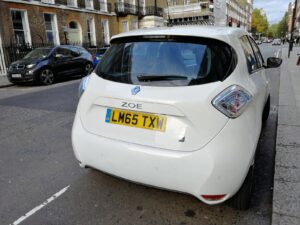Part two of our EV myth busting series…..
Are EVs no use in cold weather?
If you think electric cars and vans cannot be useful vehicles in colder weather, think again. And take a look at Norway, which is not only one of Europe’s coldest countries with a long, snowy winter, but is also the European country that has the highest percentage of EVs on its roads.
So let’s be honest – electric cars perform better in summer, with a longer range. In winter, batteries tend to perform less well due to colder temperatures. And things such as heating, heated seats and heated steering wheel will use up some of the battery capacity, reducing your range.
There are number of benefits that non-electric car drivers have yet to learn about, however. If your EV is left plugged in overnight, then you can set your vehicle to pre-condition before starting a journey. That means you can tell the car, usually via a command in the vehicle’s app, to heat the interior ahead of you setting off. A warmed up car means not only pleasant conditions inside, immediately you start off, it can also mean an end to scraping frost or ice off windscreens and side windows – a convenience but also a safety benefit.
And it is worth remembering that most electric vehicles use regenerative braking to recharge the battery, when you brake. That’s something which happens the same, winter or summer.
So yes, your vehicle’s range will be lower in winter – but honestly, traditional vehicles use more fuel in the winter, too. So let’s not worry about this as a major issue – it’s not.

Aren’t EVs very expensive?
While that might have been the case a few years back, it is no longer necessarily true.
True, many of the first electric cars were expensive, as manufacturers looked to make luxury, high end vehicles that would deliver them a higher profit. But today there are more than 100 different electric cars on the market, with the cheapest new electric car currently available, the Dacia Spring, starting at under £15,000. And there are plenty more second hand electric cars on the market, from under £5,000.
Then there are running costs. Mile for mile, electricity is much cheaper than petrol or diesel, particularly if you can charge up at home. Electric vehicles also have lower servicing costs, as there are no filters, oil or spark plugs to replace. With regenerative braking, electric car brakes also last far longer than equivalent ICE (internal combustion engine) cars.
When taken overall, the total cost of ownership of an EV is now regularly on a par with engine-powered vehicles.
Interested in reading about more electric car myths – and the reality? This link takes you to part one of our series on mythbusting.


